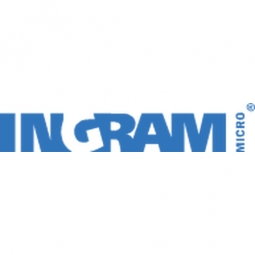下载PDF
Ensuring the safety of Alzheimer’s and dementia patients through IoT-driven trac

技术
- 分析与建模 - 大数据分析
- 网络与连接 - 网关
- 网络与连接 - 其他
- 平台即服务 (PaaS) - 数据管理平台
- 传感器 - 相机/视频系统
- 传感器 - 全球定位系统
适用行业
- 医疗保健和医院
用例
- 面部识别
- 人员跟踪与监控
- 远程病人监护
服务
- 无人机运营服务
- 硬件设计与工程服务
- 软件设计与工程服务
挑战
即使在早期阶段,流浪也是阿尔茨海默氏症和痴呆症的常见症状(60% 的阿尔茨海默氏症患者会在某个时候流浪并迷路)。这些疾病会杀死脑细胞并破坏人们的记忆,尤其是短期记忆。患者忘记了他们做的最后一件事,所以他们的第一个冲动是站起来开始行动,打算做某事。更复杂的是,患有痴呆症的人在拥挤或未知的情况下很容易迷失方向并变得困惑,并且他们有强烈的想要逃跑的倾向。
客户
未公开
关于客户
东北部几家高级护理和辅助生活设施的所有者正在寻找一种更好的方法来解决一个常见问题:有记忆相关问题的患者倾向于走神。最近发生的几起事件在护理人员中引发了危险信号,他们担心个人完全离开设施。
解决方案
患者跟踪系统结合了面部识别、GPS 位置跟踪技术和监控摄像头。带有自动通知、风险警报和视觉提示的内置风险缓解功能有助于确保患者不会越过安全区域。
通过系统对患者进行监测并在患者走失时发出警告,护理人员可以投入更多时间和资源来照顾居民。借助监控摄像头帮助确保患者不被虐待、忽视或造成自残,与患者安全相关的责任显着降低。
跟踪解决方案包括:
- 传感器
- 网关
- 连接性
- 摄像机
- 录像机
- 视频硬盘
- 云
- 分析
运营影响
相关案例.

Case Study
Hospital Inventory Management
The hospital supply chain team is responsible for ensuring that the right medical supplies are readily available to clinicians when and where needed, and to do so in the most efficient manner possible. However, many of the systems and processes in use at the cancer center for supply chain management were not best suited to support these goals. Barcoding technology, a commonly used method for inventory management of medical supplies, is labor intensive, time consuming, does not provide real-time visibility into inventory levels and can be prone to error. Consequently, the lack of accurate and real-time visibility into inventory levels across multiple supply rooms in multiple hospital facilities creates additional inefficiency in the system causing over-ordering, hoarding, and wasted supplies. Other sources of waste and cost were also identified as candidates for improvement. Existing systems and processes did not provide adequate security for high-cost inventory within the hospital, which was another driver of cost. A lack of visibility into expiration dates for supplies resulted in supplies being wasted due to past expiry dates. Storage of supplies was also a key consideration given the location of the cancer center’s facilities in a dense urban setting, where space is always at a premium. In order to address the challenges outlined above, the hospital sought a solution that would provide real-time inventory information with high levels of accuracy, reduce the level of manual effort required and enable data driven decision making to ensure that the right supplies were readily available to clinicians in the right location at the right time.

Case Study
Gas Pipeline Monitoring System for Hospitals
This system integrator focuses on providing centralized gas pipeline monitoring systems for hospitals. The service they provide makes it possible for hospitals to reduce both maintenance and labor costs. Since hospitals may not have an existing network suitable for this type of system, GPRS communication provides an easy and ready-to-use solution for remote, distributed monitoring systems System Requirements - GPRS communication - Seamless connection with SCADA software - Simple, front-end control capability - Expandable I/O channels - Combine AI, DI, and DO channels

Case Study
Driving Digital Transformations for Vitro Diagnostic Medical Devices
Diagnostic devices play a vital role in helping to improve healthcare delivery. In fact, an estimated 60 percent of the world’s medical decisions are made with support from in vitrodiagnostics (IVD) solutions, such as those provided by Roche Diagnostics, an industry leader. As the demand for medical diagnostic services grows rapidly in hospitals and clinics across China, so does the market for IVD solutions. In addition, the typically high cost of these diagnostic devices means that comprehensive post-sales services are needed. Wanteed to improve three portions of thr IVD:1. Remotely monitor and manage IVD devices as fixed assets.2. Optimizing device availability with predictive maintenance.3. Recommending the best IVD solution for a customer’s needs.

Case Study
HaemoCloud Global Blood Management System
1) Deliver a connected digital product system to protect and increase the differentiated value of Haemonetics blood and plasma solutions. 2) Improve patient outcomes by increasing the efficiency of blood supply flows. 3) Navigate and satisfy a complex web of global regulatory compliance requirements. 4) Reduce costly and labor-intensive maintenance procedures.

Case Study
Harnessing real-time data to give a holistic picture of patient health
Every day, vast quantities of data are collected about patients as they pass through health service organizations—from operational data such as treatment history and medications to physiological data captured by medical devices. The insights hidden within this treasure trove of data can be used to support more personalized treatments, more accurate diagnosis and more advanced preparative care. But since the information is generated faster than most organizations can consume it, unlocking the power of this big data can be a struggle. This type of predictive approach not only improves patient care—it also helps to reduce costs, because in the healthcare industry, prevention is almost always more cost-effective than treatment. However, collecting, analyzing and presenting these data-streams in a way that clinicians can easily understand can pose a significant technical challenge.






